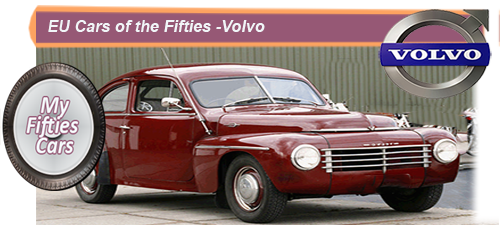
 Volvo was founded in 1927, in Gothenburg, Sweden, as a wholly-owned subsidiary of SKF, one of the World's leading manufacturers of ball-bearings.
Volvo was founded in 1927, in Gothenburg, Sweden, as a wholly-owned subsidiary of SKF, one of the World's leading manufacturers of ball-bearings.
SKF had been planning to use the Volvo trademark for some years to market a range of ball bearings specially developed for export markets, in particular, the United States.
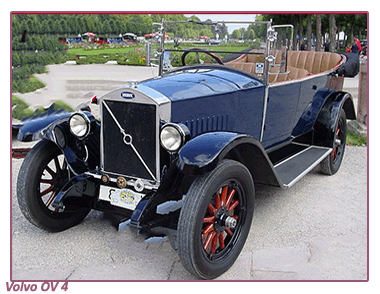 While the Volvo ball bearing line failed to set the heather on fire stateside, for reasons that remain mired in history, SKF also designated the trademark for a range of vehicles to be released in the future.
While the Volvo ball bearing line failed to set the heather on fire stateside, for reasons that remain mired in history, SKF also designated the trademark for a range of vehicles to be released in the future.
That time came in 1927 when SKF decided to take their first careful steps into the car manufacturing industry.
To head up this exciting new project, to be based in Gothenburg, SKF appointed Assar Gabrielsson, co-founder of the ball bearing giant as managing director.
Gabrielsson wasted no time in bringing in his good friend, Gustav Larson, a talented and innovative engineer to be the company's technical manager.
The first Volvo car rolled off the production line at Gothenburg in the spring of 1927.
Marketed as the Volvo ÖV 4, this debut model was followed up by a series of workhorse like closed top and cabriolet vehicles, specially designed to meet the rigours of motoring in Sweden's demanding climate and terrain.During the years before the outbreak of World War Two, Volvo carved themselves out in a niche in the domestic market with little aspirations of exporting their cars outside of Sweden.
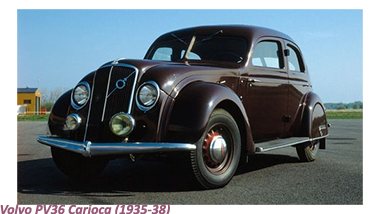 That was to change in 1947 when Volvo finally began production of their PV444 saloon, which had captured the attention of the foreign press when first introduced three years previously.
That was to change in 1947 when Volvo finally began production of their PV444 saloon, which had captured the attention of the foreign press when first introduced three years previously.
The smallest Volvo to date, the PV44 proved to be a tremendous success, earning the Swedish car industry its first glimmers of international recognition, although initially just in Scandinavia, gradually spreading throughout Western Europe and the United Kingdom.
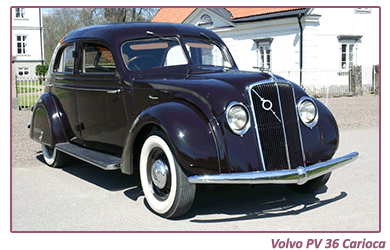 Volvo's long overdue entry into the United States, not as a ball bearing but a family saloon came in the mid-Fifties when Californian based hardware distributor Leo Hirsh was handed the franchise to market cars in the state.
Volvo's long overdue entry into the United States, not as a ball bearing but a family saloon came in the mid-Fifties when Californian based hardware distributor Leo Hirsh was handed the franchise to market cars in the state.
News of the Volvo cars and what they had to offer soon began to spread, and by the end, if the Fifties Volvo dealers could be found throughout the United States and Canada.
![]()
In 1957 Volvo introduced the Amazon, their first international bestseller. So successful was the Amazon that it went on to become the backbone of the range throughout the Sixties, remaining in production until 1970, in various formats, designs, and engine sizes.
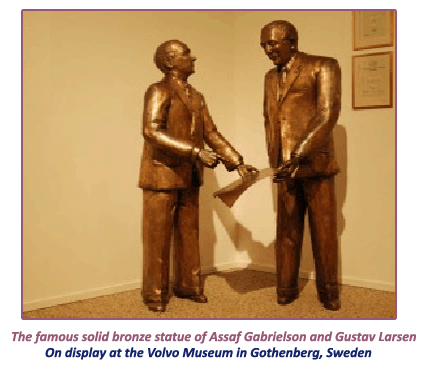 Such was the extent of Volvo's success in North America that by 1963, the company opened their first assembly plant outside of Sweden, in Halifax, Nova Scotia, Canada.
Such was the extent of Volvo's success in North America that by 1963, the company opened their first assembly plant outside of Sweden, in Halifax, Nova Scotia, Canada.
Driven by the success of the Amazon, Volvo went on to become a leading global manufacturer of luxury saloons, sports cars, and SUVs with an emphasis on safety and reliability.
 In 1999 SKF sold Volvo to the Ford Motor Company for more than six billion dollars. With the acquisition, Volvo became a part of Ford's ill-fated Premier Automotive Group alongside Aston Martin, Jaguar, and Land Rover.
In 1999 SKF sold Volvo to the Ford Motor Company for more than six billion dollars. With the acquisition, Volvo became a part of Ford's ill-fated Premier Automotive Group alongside Aston Martin, Jaguar, and Land Rover.
The Group experiment proved to be a marketing disaster,leading to Ford dismantling the package ten years later, with Volvo being " offloaded" to Geely Automobile of China in 2010 for just $1.8 billion.


